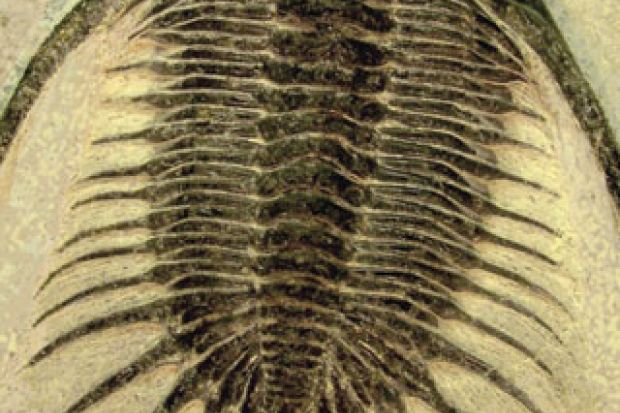Trilobites, those iconic arthropods that lived in the seas between about 522 million and 250 million years ago, are long extinct and left no descendants. But we have been bequeathed their beautiful and fascinating fossils, and in this enchanting book they are portrayed in all their diversity in a series of enthralling colour photographs.
This is Riccardo Levi-Setti’s third work on the subject. I recall, as long ago as 1974, trying to persuade the University of Chicago Press that his proposed photographic atlas of trilobites was a viable proposition. It evidently was, for Chicago published Trilobites in 1975. The atlas became very well known, and to a great many folk, scientists and otherwise, it was their first introduction to these marvellously diverse marine creatures. The first edition had full-page black and white photographs, almost all taken by the author, and was a visual treasure. Its second edition, published in 1993, was equally attractive. And now we have the third noteworthy Levi-Setti volume, Trilobites’ successor, and all 235 plates are in colour. Of course, as explained in the introduction (“Why color?”), the colours are not necessarily original to the trilobite, but are most often mineral coatings resulting from chemical changes in the rock after burial (diagenesis). But they set off the contrast between the fossil and the rock splendidly, and add to their attractiveness.
The focus of this remarkable book differs somewhat from that of its predecessors, and indeed the author considers it a new book altogether. And so it is. It is a personal journey, a kind of travelogue through the trilobite world, starting with Levi-Setti, a professor of physics at the University of Chicago, finding his first trilobite in a suburb of that city, more than 40 years ago. Since then he has travelled to many trilobite-rich locations around the world, and this book’s ensuing chapters eloquently describe and illustrate what he has collected.
It is not an exhaustive list, of course, for trilobites are found worldwide, but instead a personal testament of places and fossils dear to the author. Bohemia, southwest of Prague, has been classic trilobite-hunting territory since the 1840s, and some fine examples of its perfect trilobites are shown here. Morocco is now a primary source of wonderfully preserved, often large and spiny trilobites, sometimes with great numbers on a single slab; their extraction and preparation has become a local industry – as has the making of fakes. Western North America is a great source of beautiful examples, especially from the early Cambrian, as is eastern Newfoundland where giant Middle Cambrian Paradoxides abound. Likewise the UK, and Wales especially, has long yielded many kinds of trilobite. Those of the St Petersburg region in Russia, beautifully prepared and often spiny, are exquisitely figured here, as are some from other parts of the world, obtained from cooperative dealers at the annual Tucson Gem and Mineral Show in Arizona, as Levi-Setti recounts.
Illustrations of the eyes of some trilobites, a couple of quaint Victorian trilobite poems and a bibliography bring this marvellous book to a close. Its production values are excellent, its photographs amazing, and its typographical errors few apart from some forgivable lapses with Welsh place names. And at this price it is a bargain, to be savoured with a glass of wine on a winter evening.
The Trilobite Book: A Visual Journey
By Riccardo Levi-Setti
University of Chicago Press, 288pp, £31.50
ISBN 9700226124414 and 4551 (e-book)
Published 16 June 2014
Register to continue
Why register?
- Registration is free and only takes a moment
- Once registered, you can read 3 articles a month
- Sign up for our newsletter
Subscribe
Or subscribe for unlimited access to:
- Unlimited access to news, views, insights & reviews
- Digital editions
- Digital access to THE’s university and college rankings analysis
Already registered or a current subscriber?





